Nowadays, polyester is everywhere – be it in your basic t-shirt, cozy fleece jacket, and even underwear. However, is this fabric, which we wear at all times, eco-friendly or even good for our health? We’re here to explain the dangers of polyester and why it’s detrimental to the well-being of our planet.
Is Polyester Eco-friendly?
Polyester is a toxic, petrochemical fabric that’s slowly poisoning us and our planet. It can take up to 400 years to decompose, releasing harmful chemicals and microplastics into the environment during the process.
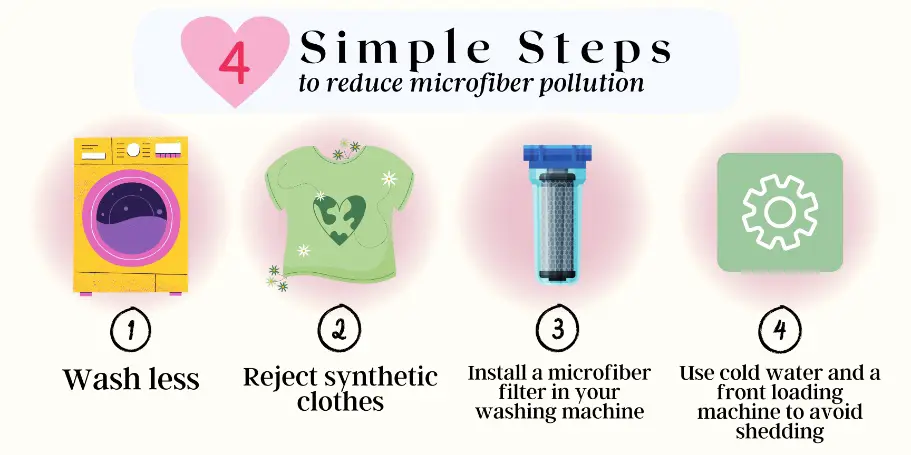
Emitting Microplastics During Washing
Polyester is a huge culprit when it comes to microplastic pollution, as the fabric slowly suffocates the marine life, releasing toxic microfibers (<5 mm) into the environment during laundry cycles. Unfortunately, sewage systems fail to filter out these particles, leading to irreversible environmental pollution.
Nowadays, 35% of global microplastic pollution in oceans come from synthetic textiles like polyester. This amounts to 2.2 million tons of microfibers permeating the marine life annually.
PRO TIP: Avoid higher temperature washes, as they cause your polyester items to shed more microplastics.
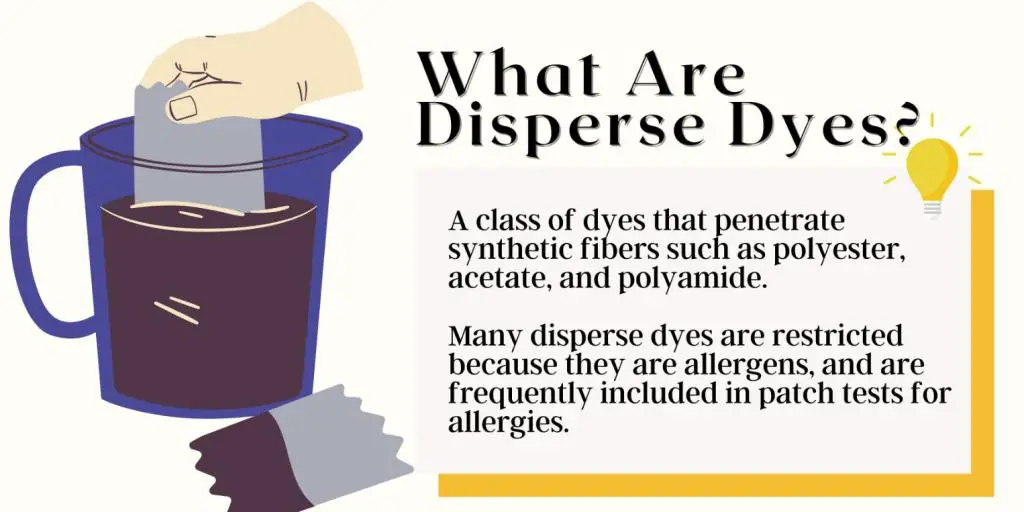
Releasing Pollutants Through Dyeing Processes
Dyeing and printing polyester accounts for 30% of the pollutants in textile industry wastewater effluents, leading to the color, organic load, and solids being suspended in the wastewater.
The major culprit in the polyester dying processes appear to be disperse dyes, which feature low solubility in water and bind to the polyester fiber. Believe it or not, typically 10-20% of the disperse dyes used are lost in the wastewater during dyeing because of incomplete dye bath exhaustion and washing. This makes polyester dyeing one of the most environmentally harmful textile processes.
While disperse dyes themselves are considered low-toxic, their pigmentation raise concerns, even at low concentrations. Their color tends to dye streams and rivers on a massive scale – in fact, denim dyes have caused African rivers to turn completely blue, making the water as alkaline as bleach.
Moreover, the wastewater from disperse dyeing of polyester contains high amounts of pollutants – over twice as much as acid dyeing wastewater. This is due to the dyes, salts, acids, and other auxiliaries used.
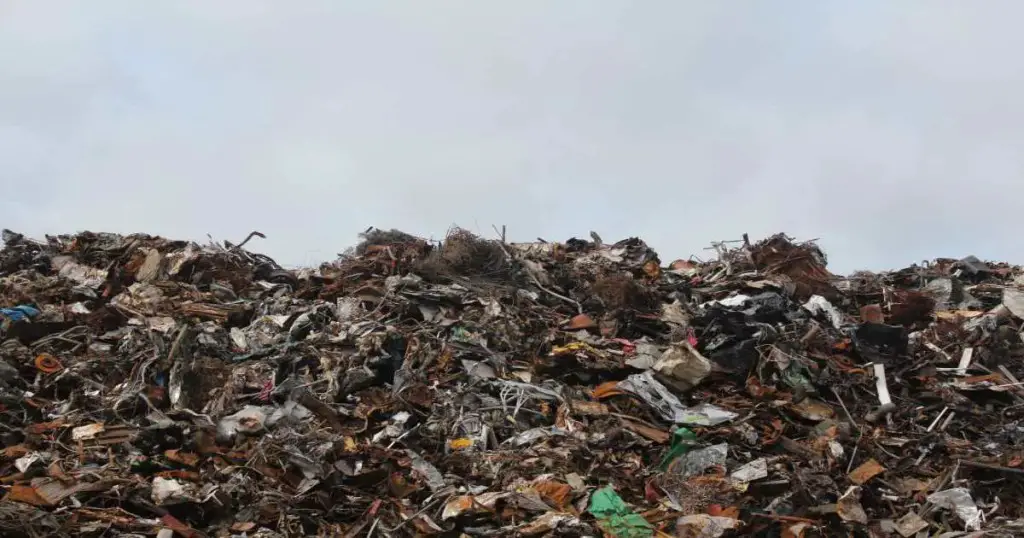
Turning Into Non-Biodegradable Waste
The very chemical structure of polyester makes it impossible to break down. On a molecular level, strong carbon-carbon bonds adhere to polyester molecules. Due to the strength and stability of these bonds, microorganisms can’t metabolize or decompose them.
That is to say, microbes don’t possess the enzymes that could break down polyester into simpler compounds. This isn’t the case with natural, biodegradable materials, as microorganisms can easily digest natural cellulose polymers.
For this reason, polyester ends up accumulating for generations, taking up hundreds of years to decompose – depending on the thickness of the material, the conditions of the environment, and the prevalence of microorganisms.

Releasing Chemicals During Decomposition
Invisible threats persist when polyester decomposes. During the process, the fabric leaches toxins into groundwater, waterways, and soil, which deteriorates the well-being of ecosystems.
When pondering the question, “Is polyester eco-friendly?”, it’s crucial to think about all the chemicals that the fabric carries. For instance, antimony, manganese, and chromium, which polyester contains, enter the environment during decomposition.
Considering the fact that polyester takes centuries to break down, all the toxins it releases end up poisoning our planet for a long time.
The Antimony Concern
As a flame retardant synergist or a catalyst, antimony allows for the production of polyethylene terepthalate. When we discard the fabric, this chemical permeates the soil and groundwater, contaminating nearby ecosystems and water resources.
And if this isn’t bad enough, through bioaccumulation, antimony persists in the tissues of living organisms, including plants, animals, and various microorganisms.
Research shows that antimony contamination deteriorates the gut bacterial composition of earthworms, as they accumulate the toxin in their tissues. The chemical can also harm the aquatic life, mainly due to human waste. Overall, the level of antimony build-up depends on the species and their specific role in the food chain.
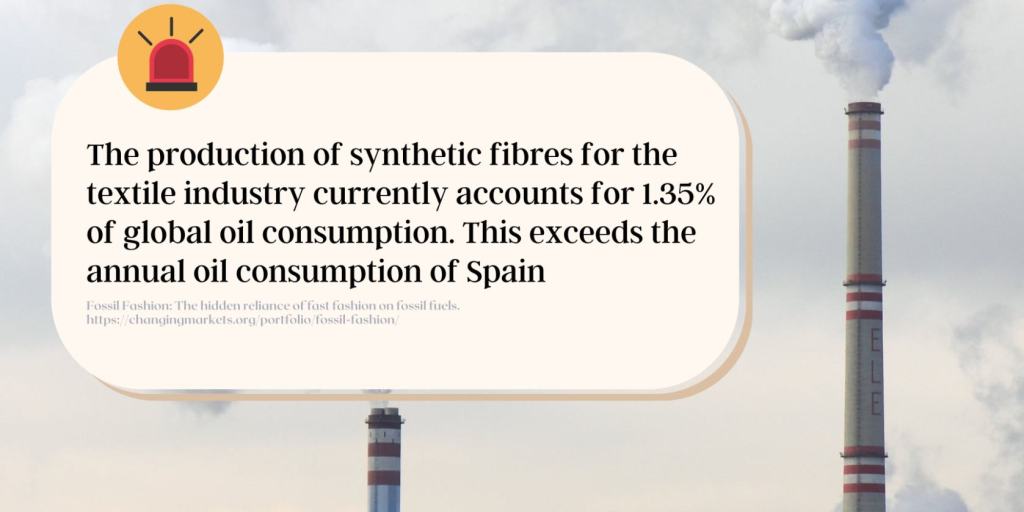
A Concerning Carbon Footprint
Producing polyester takes massive amounts of energy, leading to tons of carbon dioxide spewed into the air. According to the UN, the textile industry churns out 10% of global emissions, with petroleum-based synthetics like polyester as the largest offenders.
So, when answering the question, “is polyester environmentally friendly?”, it’s crucial that we scrutinize the fabric’s overall carbon footprint. Firstly, while polyester uses less H2O than cotton, it is, nevertheless, a climate villain. Producing polyester generates 2 to 3 times more carbon emissions, as compared to cotton. In fact, one study estimated a single polyester T-shirt to have a carbon footprint of around 5.5kg, which is an alarming amount.
Secondly, polyester necessitates significant energy consumption – from 104 to 217 megajoules per one kilogram of the textile, encompassing both fiber and fabric production.
Additionally, spawning from unrefined petroleum materials, polyester requires the use of fossil fuels, namely crude oil and natural gas – the infamous non-renewable resources that release harmful air pollutants upon burning.
Overall, polyester production leads to a whopping 700 million tonnes of CO2 emissions annually. This is the same amount as the annual emissions of 180 coal-fueled power plants.
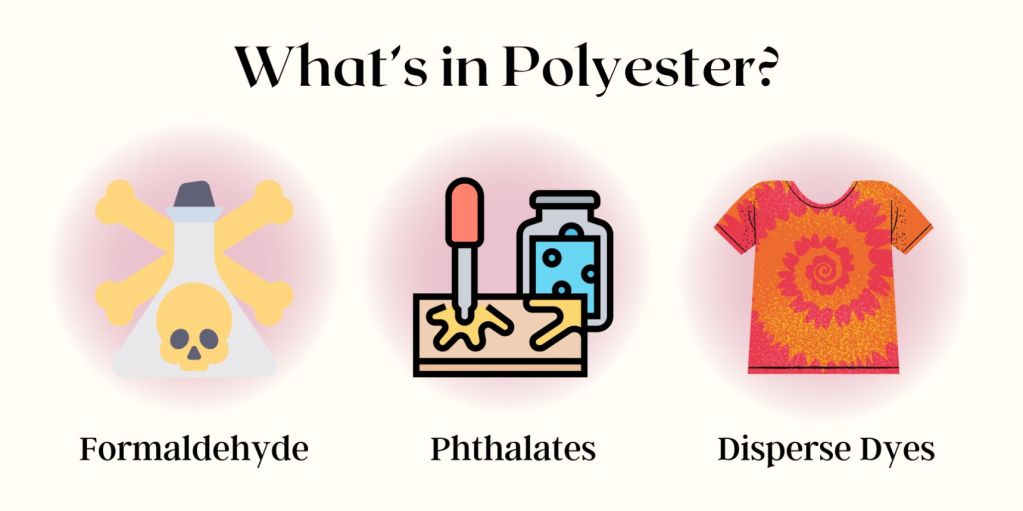
High Levels of Toxins Present in Polyester: Health Effects
Studies reveal the dirty secrets hidden in polyester fibers – carcinogenic formaldehyde, hormone-disrupting phthalates, heavy metals, and allergy-provoking dyes. These toxins don’t just live in the fabric, they get absorbed into skin and inhaled into lungs with every wear.
When exposed to toxic polyester, consumers often report immediate reactions like rashes, headaches, nausea. However, the full damage builds up slowly, silently. Known as bioaccumulation, years of exposure to polyester can transform into greater health issues, spawning respiratory disease, contact dermatitis, eczema, and Multiple Chemical Sensitivity.
Such effects do not only harm the wearer of polyester clothes but also extends to the garment workers who produce them.

Disperse Dyes: Health Risks in Wearers, Workers, And More
Polyester fabric undergoes a dyeing process known as disperse dyeing. This method relies on sparingly water-soluble dyes and high heat and pressure conditions to fix color onto the synthetic fibers.
The disperse dyes themselves may contain toxic heavy metals like lead or chromium, capable of causing developmental impairment and organ damage over time. Additionally, they can harbor phthalates, which are linked to skin irritation and respiratory distress.
Disperse Dyes Harming The Aquatic Life
When pondering the question, “Is polyester environmentally friendly?”, we must highlight the impact of disperse dyes on the marine life.
Scientists have proved few disperse dyes for aquatic toxicity, proving that they harm sea organisms, such as Daphnia, in lab testing. Studies mention specific dye amounts, ranging from 0.35 to 2.95 mg/L, for some types of disperse dyes, meaning they can be acutely toxic at low concentrations.

Polyester Causing Allergic Reactions
According to the book, “Killer Clothes”, a wide variety of health issues like rashes, nausea, fatigue, headaches, and breathing problems, have been reported in people of all ages, due to chemical sensitivity from dyes and finishes in clothing.
Children can experience flushed cheeks, hyperactivity, and learning/behavioral problems when exposed to synthetic fabrics. Wearing tight clothes, especially in the heat, exacerbates such effects.
Garment Finishes Involve Concerning Chemicals
Garment finishing imbues polyester with a myriad of synthetic chemicals to achieve optimal properties like flame retardancy, stain resistance, and wrinkle-free permanence. The residual chemicals left on the material may provoke allergic skin reactions in sensitive wearers.
These finishes incorporate hazardous chemicals, including formaldehyde (used in crease-resistant finishes), organosilicones (used in softening finishes), phenols and quaternary ammonium compounds (used in antimicrobial finishes), and more.
Beyond just finishes, toxic clothing materials deteriorate the wearer’s health, as they contain azo dyes, heavy metals, PFAS (the so-called “forever chemicals”), chlorine bleach, pesticides, and other chemical residues. All of these lead to concerning health effects, such as endocrine disruption, allergic reactions, and even cancer.
For this reason, consumers should avoid clothes featuring the following properties:
- Oil repellent
- Flame retardant
- Anti-slip
- Anti-static
- Anti-microbial
- UV protection
- Insect resistant

Fast Fashion is Fueling a Public Health Crisis Through Polyester
Fast fashion brands, such as BloomChic, Shein, Yesstyle, and more, are fueling a public health crisis by aggressively promoting cheap, toxic polyester clothing. These brands completely disregard how their polyester garments jeopardize people’s health.
Truly, their supply chains spread pollution across the globe, as toxic fabrics make a long journey to reach us. Laden with chemicals form dyeing and manufacturing, fast fashion clothing spreads chemical pollutants – from countries, such as China, Bangladesh, and Vietnam, where they’re made, all the way to clothing racks in developed nations.
Given that, the detriments of polyester only concern us, consumers in the Global North, but also ecosystems, inhabitants, and most importantly, garment workers of the Global South.

Is Polyester Eco-Friendly? Presence of Heavy Metals
It’s relatively common knowledge that polyester is laden with synthetic dyes, stabilizers, and other chemicals that are allergens and/or carcinogens. However, did you know that it also contains lead and other heavy metals?
A 2021 study detected high levels of lead in fast fashion clothing samples from Shein, Zaful, and Aliexpress. It found that bright pigments and synthetic finishes contained heavy metals, which cause neurobehavioral and reproductive problems – even through low levels of exposure.
Rejecting minimal safety measures or oversight, fashion brands show no regard towards consumer health. Therefore, it’s the consumer’s responsibility to avoid lead in synthetic, brightly-colored clothes by first and foremost, refusing to wear polyester fabrics.
By seeking out small-scale, ethical brands, consumers can reject polyester clothes and build a more sustainable closet. Currently, prioritizing organic fabrics is the only way to steer clear of the dangerous lead and chemicals that have permeated the fashion world.

How is Polyester Made?
Polyester spawns from crude oil, pumped straight from the depths of the Earth. Through a series of transformations, the prehistoric hydrocarbons, that is, fossil fuels, buried underground transform into soft polyester textiles. Naturally, this comes at the expense of pollution and habitat destruction.
Upon extraction, chemical engineers then refine the oil to derive the necessary monomers, dicarboxylic acid or alternatively, terephthalic acid and ethylene glycol. These monomers get actively combined under heat and pressure in a process called polymerization, forming long chains of the polyester polymer.
During the polymerization process, catalysts, such as cobalt toluate and hydrochloric acid, are used. Yet, the monomers still remain intact in the ready-made fibers, which raises health concerns. Research shows that these monomers may still “enter the human body” while wearing polyester clothing, posing risks to the wearer even in the aftermath of polymerization.
The Rise of Synthetic Fabrics in the 20th Century
Ever since the dawn of nylon, synthetic textiles took over the apparel industry, which skyrocketed the amount of textile waste all over the world. The 20th century fueled the synthetic fabric frenzy, as scientists engineered convenient wonders of wrinkle-free, fast-drying, polyester fabrics.
Discovered in 1953 and commercialized by brands like DuPont soon after, polyester polyester captivated consumers with its durability, ease of care, and low cost. The fabric exploded in popularity through the 1950s and 60s, as it substituted cotton in men’s suits and slowly took over the fashion industry.
Fast forward to today, synthetics comprise 69% of all clothing materials, with polyester dominating as the most widely used fiber, accounting for 52% of total fiber production worldwide.
Is Recycled Polyester an Eco-Friendly Alternative?
The fashion industry touts recycled polyester as an eco-friendly solution, but this distracts from the lack of true circularity for polyester clothing. Currently, there is no large-scale recycling infrastructure that can take discarded polyester garments and transform them back into usable polyester textiles. The technology simply does not exist yet to complete this loop.
Instead, the recycled polyester used by fashion brands actually comes from plastic bottle waste, not old clothing. So, brands are diverting recycled PET (polyethylene terephthalate) from the beverage industry’s bottle recycling streams, not recycling their own polyester products.
This cross-industry material diversion allows fashion companies to greenwash – promoting recycled content that does not reduce the virgin polyester used for fabrics.
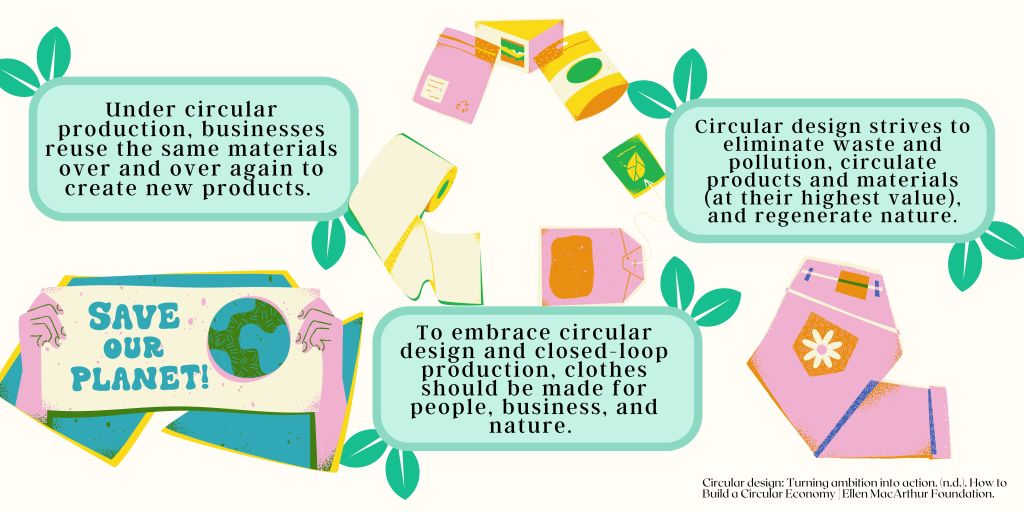
Undermining Circularity of the Bottle Industry
Truly, recycled polyester, that is, polyester made of post-consumer PET bottle waste, simply disrupts the circularity of the fashion industry. Picture this scenario – if the fashion industry takes away all the bottle waste, what’s left for the bottle industry itself? and most importantly, what’s the incentive for the bottle industry to take care of their own waste and close the loop in production?
Fashion brands want customers to believe otherwise. But behind the marketing, there is no true circularity of closed loop for polyester textiles, and clearly, recycled polyester is not the solution.
Until brands invest in and implement chemical recycling that reprocesses discarded polyester clothing into new garments, recycled polyester remains a distracting greenwashing myth, not a sustainability solution.
Final Thoughts
While the polyester industry has actively created a versatile fabric, its reliance on hazardous compounds underscores the need to actively pursue ethical alternatives and non-toxic production processes for the sake of human and environmental well-being.
When analyzing polyester environmental impact, it’s crucial to scrutinize the entire lifecycle of the fabric. From oil extraction to the microplastics shed when washing polyester clothes, there are detrimental effects at every stage.

